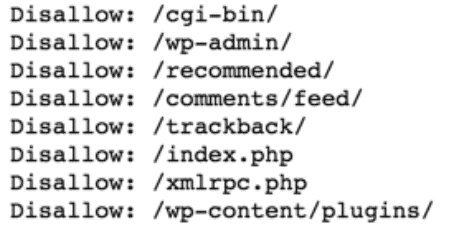Sitemap experts (including future experts) get ready: today, we will be brainstorming on how to create a sitemap. For some of you, this might be nothing but an opportunity to refresh your memories and maybe reset a few things. For others, there can be new tips to be found and learned.
In this article, we will briefly revisit some of the available sitemap formats. Then we will focus on structural and navigational matters. We will also show how to validate and submit a sitemap.
Reminder About Sitemap Types
Be aware that there are different sitemap formats and proceed accordingly. For instance, Google Sites, RSS, Text (TXT), XML are all among the possibilities. So which one should you choose? Well, you can simply decide to play it safe and go for XML, which is the most frequently used format.
By doing so, you will be sure that big-time platforms like WordPress will support your site without much complication. Sticking with mainstream options can be wiser sometimes.

Check the Arrangement of Your Website
What on earth do we mean by that? Well, whenever one decides to create a sitemap, this automatically implies a collection of pages to be dealt with. Wouldn’t you agree? So how is it supposed to work, more concretely speaking? One keyword: template.
You have to check the shape and composition of your site by using a sitemap template (preferably). Do you already have one? If not, there are different models available, so just pick the one you think best fits your website. Look thoroughly and see how your content is organized. Is the general structure ‘ergonomic’ enough for your visitors?
Are the different parts of your website accessible easily? Or do they rather require zillions of unnecessary clicks before being visualized? You shouldn’t take this step lightly because believe us, it can have dramatic consequences. Many people refuse to stay on messy websites for more than 10 seconds, regardless of how good the content itself can be. That’s why it’s important that we drop some food for thought regarding organization in the next two subsections.
Navigational Structure
A website map can adopt various kinds of navigation, depending on the content type.
Here are the most common ones:
- Associative navigation: This one is used to link similar pages to one another. No matter how new or old they are or where they are located. As long as their content is alike, they become associated.
- Utility navigation: Well, it would be more appropriate to label this one as a subcategory. It mainly focuses on user experience by proposing supportive tools. Those often include sections such as sign up/login, contact us, language selection, printing set-ups, subscription, etc.
- Structural navigation: This one is essentially based on a hierarchical arrangement of the pages. Since it’s also the one that we will hint at the most throughout this article, let’s elaborate a little more. This type of navigation follows a top-to-bottom/bottom-to-top way of functioning. What we mean by top is a particular category of pages considered to be top-priority (or top-level). About Us, Store, Pricing, or Blogs are some examples of top-level pages. However, keep in mind that depending on the website or niche. There may be different structures.
So whenever you are working with your own sitemap template, make sure to take into account this aspect. Thus try to design your pages accordingly after having assessed your priorities. What comes next? Logically, it should be your secondary (or second-level) pages and content.
Those will usually be the subcategories of your top-level pages. For example, the subcategories or second-level sections of About Us could be History, Mission and Values, etc. Then you can incorporate third-level pages and so on. More exactly, you should actually limit yourself to 3 levels unless you want to make things too complicated for your visitors.
Homepage as a Foundation
Here’s the basis that almost every field specialist seems to agree about: the homepage. Indeed, your homepage is ‘the mother of them all’ or the headquarters of your site. This is from where your other pages should flow effortlessly, waterfall-wise… sort of. As we saw in the previous subsection, the structure of your sitemap can also be horizontal/lateral (see associative navigation) in its form. We also said that in other cases, it could be vertical (from top to bottom and vice versa).
So in the latter, the visitors can unfold the subcategories starting from the top level. They can also do the other way around by climbing from the subcategories to the top categories, right?
No matter what, a well-designed homepage always acts as a node from which all the pathways spread out. Imagine it as a meta-page or a top of the top. This means that if you choose a structural format, then your homepage should be placed even before your top-level pages.

Format Your URLs
Let’s be direct: it’s simply impossible to create a sitemap if you don’t take care of your URLs properly. In other words, you should spare some time to scrutinize and code them. We will stick with our XML example here, even though it’s not the only possible format, remember?
So this is all about assigning a language to your pages. And speaking of languages, you have probably already noticed the ML part found both in XML and HTML. This abbreviation stands for a markup language. That’s right, all you have to do is work with HTML coding.
No need to stretch out things more than necessary. You can perfectly work with a free basic text editor. Atom or Sublime Text are reliable options. Looking for advanced stuff, though? Adobe Dreamweaver CC or CoffeeCup might be the premium tool suitable for your project. Both are rich in extra goodies within their libraries, which you can easily adapt to your own goals. However, the text editor features don’t matter that much when it comes to the core principles. A website sitemap usually requires tags. The opening one is to be placed at the very beginning. The closing one comes last. In between, you also have to place the codes.
The most frequently cited tags
- indicate the location.
- show the last modification date (indeed, URLs and websites are usually subject to modifications and updates).
- indicate the change frequency (weekly, monthly, etc.).
- show the priority of any given page.
Just like with the urlset and URL codes, you should also complete those with a closing slashed code.
Coding example
Here’s an illustration of what we explained in the previous paragraphs:
(entry code) http://inflatablemugs.com/ (specific site example) 2020-03-03 (meaning: last modified on March 3rd, 2020) monthly (meaning: changed every month) 1 (meaning: level 1 priority)

Confirm Your Codes
If you want to create a sitemap exempt from mistakes (as much as possible), then you should always double-check. What this means is that you should validate your URLs, making sure that they are correct. A simple manual check is always risky. Indeed, our human perception can be oftentimes misleading. So how to handle the URL details of your site map properly?
There are several tools on the market likely to help you out with that. XML Sitemap Validator is already a classic. For TXT, you also have alternatives such as WonderWebware or phpSitemapNG by Google. Compare the different options and pick the one that seems the most appealing to you.
Add Your Sitemap File to the Root Folder
Here’s one of the questions that we receive the most frequently: how to make a sitemap? Ok, nothing wrong with that. What seems to be often overlooked is the final confirmation procedure. You have to sort of ‘root’ your sitemap or, in other words, add it to the root folder (or directory). How? The safest way is probably to let your webmaster or developer take care of it.
If you are the only person in charge, you may also use a File Transfer Protocol (FTP). Either way, the principle doesn’t change. It’s all about finding your root folder and then ensuring that your sitemap file becomes an adjunct to it. The root directory is generally within the public_html folder but be careful though. Indeed, depending on several factors, such as the hosting type, you may need to check it out elsewhere. That’s why it’s usually better to collaborate with a professional (if you aren’t one yourself).
All in all, this is how your site becomes valid, while your pages are added to it as well. Where to find a ‘rooted’ sitemap example? Simple: many well-known websites are openly displaying it. All you have to do is add ‘sitemap.xml’ at the end of their domain name. This action will allow you to visualize the organizational details of the website in question.
For example, google.com/sitemap.xml (you can also try with the HTTPS extension and thus type: https://google.com/sitemap.xml).
Remember, we have decided to focus specifically on the XML format in this article. That’s why we are limiting our examples to it.
Add Your Sitemap File to Robots.txt
This is another step that you shouldn’t skip. Otherwise, you may be sabotaging any chance for your website to get indexed. If you have decided to create a sitemap, this is because you have a set of goals in your mind, right? Like improving your SEO (Search Engine Optimization) strategy, aiming for higher ranks, increasing your traffic, to name only a few. So again, in order to achieve those goals, your website must be indexed. This is mostly done by crawlers and robots, provided that they are informed properly. And precisely, the main purpose of the robots.txt file is to give them the information they need. It’s also a way to tell them which content they should ignore (through the ‘disallow’ command).
The robots.txt file is actually a component of the aforementioned root folder. Here again, you can get a taste of it by observing the example of well-known sites.
For example https://google.com/robots.txt
If you type the example given above, you will see the instructional schema of Google. Pay attention to the way they use the ‘allow’ and ‘disallow’ commands.

Submit Your Sitemap to Search Engines
Final and crucial step: submitting your website sitemap to search engines. You can picture this as a sort of virtual ‘coming out,’ officializing the existence of your site. Let’s keep it uncomplicated and stick with mainstream tendencies.
Here’s our example in which we assume that you wish to submit your sitemap to Google:
- Go to your Google Search Console account: You have to start by logging into your Google Search Console account. This is indeed where you will initiate the submission process.
- Add your sitemap: At this step, you will be entering your sitemap into the database. Click on the ‘Crawl’ menu. Select ‘Sitemaps.’ Then you may click ‘Add/Test Sitemap’ on the top right corner. If you find any errors, fix them.
- Finish the submitting process: You will see an area dedicated to your sitemap details. Type ‘/sitemap.xml’ there. Then click ‘Submit.’
Final Considerations on Creating a Sitemap
The prototypical guideline provided in this article is likely to support you in your website journey. We call it prototypical since it is certainly not the only way to create a sitemap. It’s just that we have decided to keep it simple and mostly limited to the XML format.
Rest assured about at least one thing, though: the general schema is almost always the same. No matter the format you are using, you will have to organize, check, validate, and submit to a search engine. And if it sounds too laborious, you may always ask for professional help or use specialized tools and software. If you enjoyed this article on how to create a sitemap but still need extended info on the subject, here is our guide to robots.txt sitemaps.
Frequently Asked Questions About
There are several possibilities. One of the handiest ones is using a Media RSS (MRSS) as also suggested by Google.
Mixed protocols and extensions can be risky. For example, this can prevent crawlers from detecting some of your URLs. So it’s better to be cautious and stick with only one URL version.
Not really. There’s an established limit for any individual sitemap, which is fixed as 50MB (54,428,800 uncompressed bytes) and 50,000 URLs. If you are looking for more, then you should use multiple sitemaps or submit a separate sitemap index file to the search engine.
XML-related files should be UTF-8 encoded.
If you want to automate the process and avoid errors as much as possible, you may use sitemap generators. Screaming Frog, WriteMaps, or InSpyder are reliable options.





No comments to show.